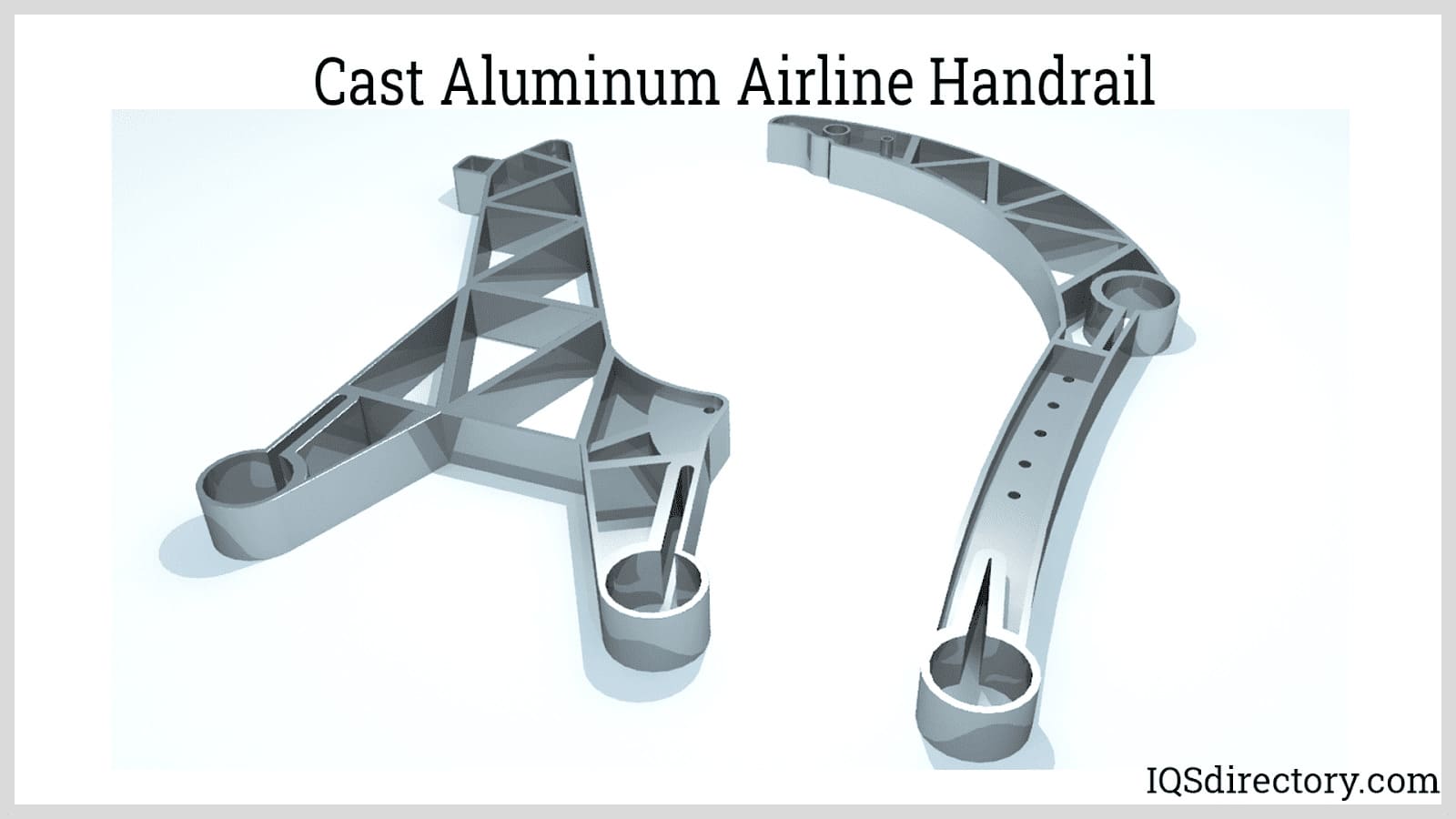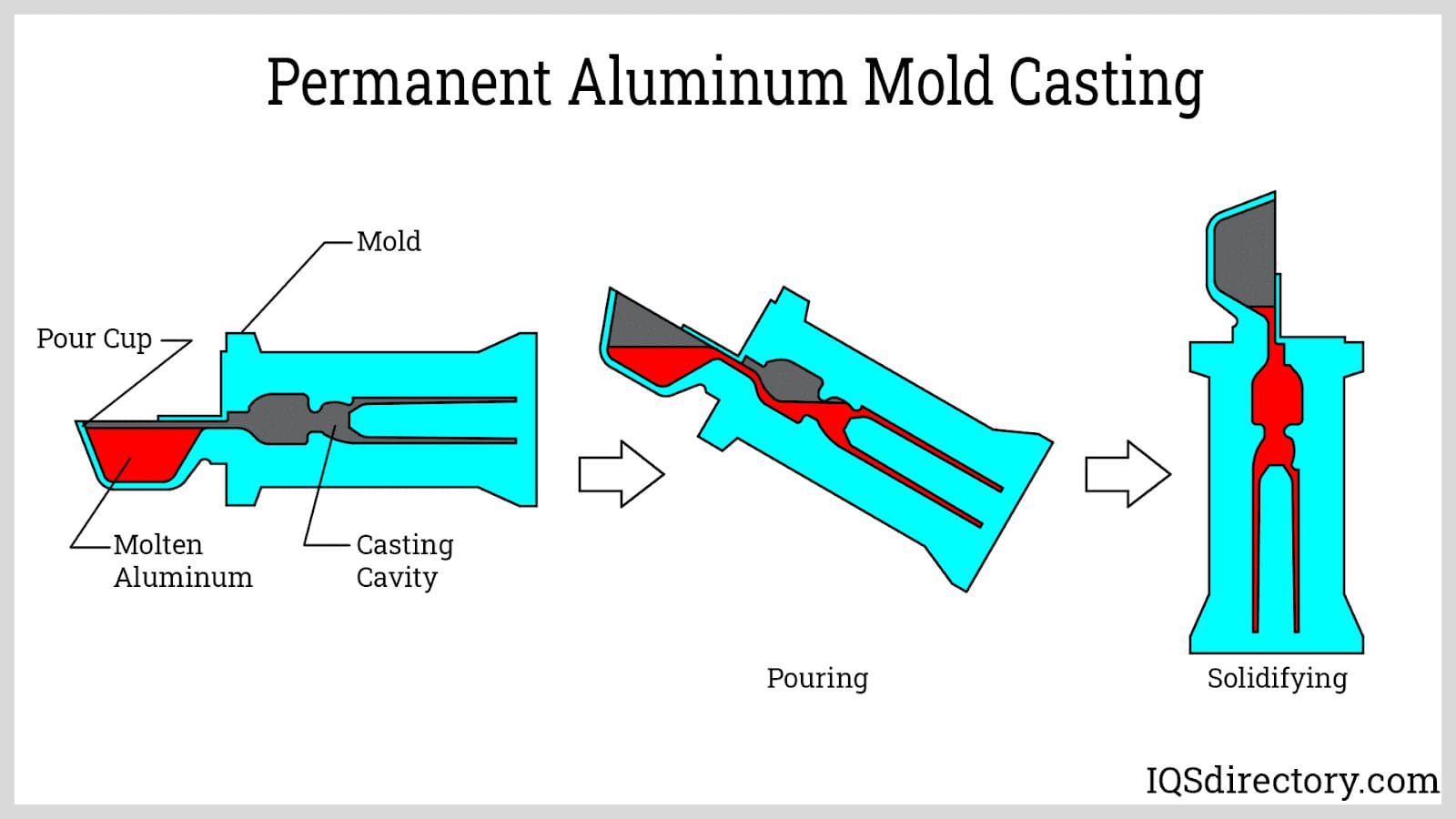Why Aluminum Castings are crucial for industrial applications
Everything About Aluminum Castings: Comprehending Their Function and Relevance in Manufacturing
Aluminum castings are indispensable to contemporary manufacturing, providing a mix of lightweight buildings and longevity. They promote intricate styles while decreasing assembly costs. Industries such as auto and aerospace often utilize these components for enhanced efficiency. Nevertheless, the manufacturing of aluminum spreadings is not without its difficulties. Understanding the subtleties of this procedure exposes both the benefits and possible challenges. Checking out these aspects will give deeper understandings right into their growing significance.
Introduction of Aluminum Spreading Processes
Aluminum casting procedures play an important duty in manufacturing, offering adaptability and performance. These procedures include putting liquified aluminum into mold and mildews to produce precise forms and parts. Various methods are used, consisting of sand casting, pass away casting, and investment spreading, each identified by its approach of mold and mildew creation and the designated application.
Sand casting makes use of a combination of sand and binder to form mold and mildews, permitting intricate geometries. Pass away casting, on the various other hand, involves forcing molten light weight aluminum right into steel molds, resulting in high precision and smooth finishes. Investment casting, usually used for intricate designs, involves developing a wax pattern covered with a ceramic covering, which is after that full of liquified light weight aluminum.
These casting techniques provide to varied commercial requirements, making light weight aluminum a favored material for elements in fields such as auto, aerospace, and customer items. The selection of casting strategy greatly affects the end product's quality and efficiency.
Advantages of Using Light Weight Aluminum Castings
The advantages of utilizing aluminum castings in production are numerous and substantial. To start with, aluminum's light-weight nature adds to reduced total product weight, boosting energy effectiveness in applications such as automobile and aerospace sectors. In addition, aluminum castings show exceptional deterioration resistance, guaranteeing long life and toughness in harsh atmospheres. The product's electric and thermal conductivity likewise makes it ideal for different applications, consisting of electronics and warmth exchangers.
Additionally, aluminum spreadings can be produced with detailed designs, enabling a lot more complex shapes that fulfill particular functional demands. This flexibility contributes to decreased setting up costs and improved style flexibility. Moreover, the spreading process itself is reliable, permitting for high-volume production with regular high quality. Aluminum is recyclable, making it an ecologically friendly alternative in manufacturing. Collectively, these benefits highlight why light weight aluminum castings are progressively preferred across diverse markets, using both efficiency advantages and financial efficiency.
Typical Applications of Light Weight Aluminum Castings
While numerous materials are utilized in manufacturing, light weight aluminum castings attract attention as a result of their wide variety of applications throughout numerous industries. These castings are commonly used in the automobile market for engine parts, transmission real estates, and structural parts, contributing to lighter automobiles and boosted gas efficiency. In the aerospace market, light weight aluminum spreadings are critical for aircraft components, where weight reduction is crucial for efficiency and safety.
In addition, the electric sector utilizes aluminum castings for housings and structural elements in machinery, taking advantage of the material's excellent conductivity. In durable goods, aluminum castings can be found in items such as appliances and sporting equipment, providing sturdiness and a contemporary aesthetic. Furthermore, the building industry makes use of light weight aluminum castings in building aspects, window structures, and fixtures, showcasing their convenience and toughness. Generally, light weight aluminum spreadings play an integral duty in improving product efficiency and performance across various fields.
Secret Manufacturing Techniques for Aluminum Castings
The production of light weight aluminum castings counts on various strategies, with sand casting and die spreading being among one of the most famous. Sand casting includes creating molds from sand, permitting big components and complex designs. On the other hand, pass away casting utilizes high-pressure shot of liquified aluminum right into recyclable mold and mildews, offering accuracy and performance for automation.
Sand Casting Refine
Sand spreading stands as one of the most commonly used methods for creating light weight aluminum castings, thanks to its convenience and cost-effectiveness. This process includes creating a mold and mildew from a mix of sand and a bonding agent, typically clay. When the mold is ready, molten light weight aluminum is poured into it, enabling the steel to fill the tooth cavity. After cooling down, the mold and mildew is broken away to expose the casting. Sand spreading accommodates huge components and complex geometries, making it ideal for numerous applications. Additionally, it enables very easy modifications, making it possible for manufacturers to readjust layouts swiftly. The surface finish may require extra machining for accurate applications, making certain the last product satisfies high quality requirements.
Pass Away Spreading Techniques
Die casting stands for an extremely reliable method for producing light weight aluminum castings, identified by its capacity to supply high precision and outstanding surface finish. This method mainly involves forcing liquified light weight aluminum into a mold and mildew under high stress, making certain that detailed forms and great details are captured accurately. There are 2 primary die spreading approaches: hot chamber and click for more info cold chamber. Warm chamber die spreading is ideal for alloys with low melting factors and allows for faster cycles, while chilly chamber pass away spreading is excellent for high-temperature alloys, requiring different melting systems. Both methods boost manufacturing rates and reduce product waste, making die casting a recommended selection in industries such as auto and electronic my blog devices, where resilience and dimensional accuracy are critical.
Sustainability in Aluminum Spreading Production
While the need for aluminum spreadings remains to grow, manufacturers are significantly prioritizing sustainability in their production procedures. This shift is driven by the demand to reduce environmental influence and preserve natural deposits. Many business are embracing recycling efforts, using scrap aluminum, which especially lowers energy intake and greenhouse gas exhausts compared to primary light weight aluminum manufacturing. Additionally, advancements in casting innovations are making it possible for more effective use materials, minimizing waste during the production procedure.
Suppliers are also checking out environment-friendly options to typical casting techniques, such as 3D printing and advanced mold and mildew modern technologies, which help maximize source use. Wisconsin Aluminum Foundry. Furthermore, executing sustainable methods in supply chain monitoring warranties that basic materials are sourced properly. Because of this, the aluminum casting sector is making strides towards a much more sustainable future, straightening with global ecological objectives while meeting the raising need for high-performance aluminum items
Difficulties and Factors To Consider in Light Weight Aluminum Casting
Light weight aluminum casting presents various difficulties that makers have to browse to ensure item honesty. Layout intricacy can make complex the spreading process, resulting in prospective flaws and enhanced production time. In addition, preserving rigorous top quality control criteria is crucial to fulfill the demands of accuracy and dependability in completed components.

Design Complexity Issues
Designing parts for light weight aluminum spreading provides various intricacies that designers must navigate to accomplish ideal results. One substantial challenge is the demand for specific geometry; intricate layouts can cause problems in mold creation and enhanced risk of issues. In addition, thermal properties of light weight aluminum require mindful factor to consider of cooling rates, as unequal cooling can cause bending. Wall surface density variations additionally position a challenge, as they can influence flow qualities and structural honesty. Engineers need to balance design aesthetic appeals with manufacturability, ensuring that attributes such as fillets and ribs are maximized for strength without making complex the casting procedure. Factors to consider pertaining to draft angles are necessary to help with mold and mildew launch, additional complicating the style process. These factors jointly underscore the intricacies included in aluminum spreading layout.
Quality Assurance Challenges
Accomplishing top notch aluminum castings entails maneuvering a series of top quality control challenges that can considerably impact the last product. First, variants in resources composition can bring about variances in casting residential properties, making it important to assure material quality. Second, the casting process itself is vulnerable to problems, such as porosity and contraction, which can jeopardize structural honesty. In addition, temperature control during melting and pouring is vital; changes can result in unequal solidification, impacting dimensional accuracy. Complete examination methods, including non-destructive testing, have to be utilized to determine defects early. Finally, keeping rigid process documentation and adherence to industry criteria is indispensable for traceability and quality control, highlighting the complex balance required to generate dependable aluminum spreadings in manufacturing.
Future Patterns in Light Weight Aluminum Casting Technology
As makers venture to boost effectiveness and sustainability, innovations in light weight aluminum casting modern technology are emerging to fulfill these needs. One substantial trend is the combination of automation and fabricated intelligence, which simplify manufacturing procedures and enhance accuracy in casting procedures. These advancements lessen human view it now error and enhance source usage, eventually leading to set you back decreases.
Additionally, the adoption of innovative products and alloys is improving the landscape. New solutions boost performance features, such as corrosion resistance and lightweight residential properties, making light weight aluminum castings more flexible throughout numerous industries.
Moreover, sustainable methods are acquiring grip, with a focus on recycling and decreasing waste. Methods such as 3D printing are additionally being discovered to develop intricate geometries that were formerly unattainable
Frequently Asked Questions

How Do Light Weight Aluminum Castings Compare to Other Materials?
Light weight aluminum spreadings offer advantages such as light-weight, corrosion resistance, and exceptional thermal conductivity contrasted to various other materials. They are typically chosen for applications needing toughness and efficiency, specifically in aerospace and automobile markets.
What Is the Life Expectancy of Light Weight Aluminum Castings?
The lifespan of aluminum spreadings usually varies from 10 to half a century, relying on ecological conditions, use, and upkeep. Their rust resistance and durability contribute noticeably to their durable efficiency in numerous applications.
Can Aluminum Castings Be Recycled?
Yes, light weight aluminum castings can be reused. The reusing process is efficient, allowing for the recovery of light weight aluminum without substantial loss of top quality, making it a sustainable choice in manufacturing and reducing ecological effect.
What Safety Measures Are Needed Throughout Aluminum Spreading?
Throughout aluminum casting, important precaution consist of wearing proper individual safety equipment, making certain correct ventilation, keeping devices, using fireproof materials, and applying risk-free handling methods for molten steel to avoid injuries and accidents.
How Do Temperature Level Changes Impact Light Weight Aluminum Castings?
Temperature modifications considerably influence aluminum spreadings by influencing fluidity, solidification prices, and mechanical residential or commercial properties. Fast cooling can cause enhanced brittleness, while steady air conditioning advertises much better structural integrity and decreases the danger of issues.
Die spreading, on the various other hand, involves compeling liquified aluminum right into metal molds, resulting in high precision and smooth coatings. The manufacturing of light weight aluminum castings depends on different techniques, with sand casting and die casting being amongst the most prominent. Sand spreading stands as one of the most commonly used approaches for producing aluminum castings, thanks to its flexibility and cost-effectiveness. Pass away spreading represents an extremely effective approach for generating light weight aluminum castings, defined by its capability to supply high precision and exceptional surface area coating. While the demand for aluminum spreadings continues to expand, makers are significantly focusing on sustainability in their manufacturing processes.